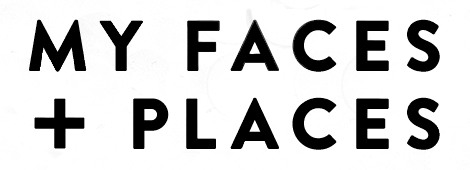My pilgrimage to Casa Pasteis de Belém in Lisbon for the Pasteis de Belém (Portuguese Egg Tart)
This food article describes my pilgrimage to Casa Pasteis de Belém in Lisbon for the Pasteis de Belém (Portuguese Egg Tart).
The Start:
We met Noel at the EXpresso coffee bar at the Excelsior Hotel in Hong Kong. After some difficulty, we found a table as the place was teaming with people. This is not unusual for a bustling city like Hong Kong. He was a director at the hotel and knew the house speciality – egg tarts with coffee.
He said the franchise “Lord Stow” was from Macau (previously a Portuguese colony) and the egg tarts was based on a recipe from Portugal. This is most popular item and we shift them by the “truck load” (about a thousand a day).
The tarts arrived and they looked burnt. I have always been very careful about sampling “burnt” food but it tasted good. It was different from the Chinese Egg Tart. I have been brought up with the mindset that many foods in the world originated from China. Like – Pasta (spaghetti, fettuccine) coming from noodles, ravioli from won tan, risotto from Chinese congee etc.. I then said, “Did the Portuguese copy the recipe from the Chinese?”
Noel said “Quite the reverse. The Portuguese brought this to Macau and the Chinese did their own version with the “Egg Tart” or “Dan Tat”.
“Hmm” I said. “That is pretty unusual. The Chinese following the recipe from another country.”
“No” said Helen. “The Chinese use Worcestershire Sauce and Salad Cream to their cooking. If it is good, the Chinese will use it. They are always seeking ways to improve or get the right taste.”
I felt that “Lord Stow”, an English name, was incongruous with the selling of Portuguese egg tart in Macau and let alone Hong Kong, previously a British Colony.
Noel then related the Story of “Lord Stow” and said that, you can try more of these Portuguese Egg Tarts at Margaret’s Café e Nata in Macau. My curiosity was awaken.
Story of Lord Stow:
Andrew Stow, born in England, went to Macau as a Pharmacist in 1979. He worked in the restaurant at the Hyatt Hotel to support his new business. It was during this time he got the nickname of “Lord Stow” because of an “Englishman” who was “lording” over them.
Andrew created his own Egg Tart recipe and started his own coffee shop named “Lord Stow” in 1989. This was franchised in 1997 with cafés in Hong Kong and China.
Sadly, he passed away in 2006 but his name remains alive and kicking when referring to the Portuguese Egg Tart in the East.
Chinese egg tarts is big business in Hong Kong with Tai Cheong Bakery known as the “King of Egg Tarts”. It gained considerable publicity when the last British Governor, Chris Patten, would call them “the best Egg Tarts in the World”. He was reputed to buy these tarts by the box load. Perhaps that was the reason he had the nickname “Fatty Pang”.
My Search for the Portuguese Egg Tart:
On my return to the UK, I started researching on Portuguese egg tart. The Guardian newspaper has listed it as one of the top things to eat in the world. It is considered to be Portugal’s pastry icon and becoming a symbol of the country abroad. The record of this search is to be reported in this travel blog.

London’s, Lisboa Patisserie in kensal green (Golbourne Road) specialises in the Portuguese Egg Tarts.
I made it a point to visit various Portuguese coffee shops in London and try their Portuguese egg tart. I hit the jackpot with Lisboa Patisserie in Kensal Green. It is an unpretentious café but with a large outside seating area on the pavement in Golbourne Road. I sat inside and watched. The counter staff were always busy as there was a constant stream of customers. Some were coming to have a coffee and pastry but the majority were just buying pastries to take away. They were mainly the Portuguese egg tart. I found out that the kitchens are below and is the preparation area for the pastries; about 1,000 Portuguese egg tarts a day. These numbers are staggering. The Portuguese egg tart is certainly Portugal’s pastry icon.
I said to myself, with these numbers, I have to make a pilgrimage to Café Pasteis de Belém.
The aim of this food article in this travel blog is the description of the search for the original Portuguese egg tart, visit the origins and the bakery that is still using the original recipe.
The Jerónimos Monastery where the original recipe for the Portuguese egg tart was developed.
Pastél de nata
The creation of pastél de nata is credited to the monks in Jerónimos Monastery in Belém. At that time, large quantities of egg white was used to starch clothes and the remaining yolks used for the preparation of cakes and pastries.
In the 1820 Liberal revolution, all convents and monasteries in Portugal were shut down. Someone from the monastery offered the recipe to the shop which was adjacent to a sugar refinery in Belém. In 1837, the baking of the “Pasteis de Belém” using the secret recipe from the monastery started. The visitors of the Jerónimos Monastery and the Belém Tower sampled the Egg tarts in their refreshment break.
The Portuguese egg tart is generally known as “Pastél de nata”. However, the Egg Tarts produced and sold by “Casa Pasteis de Belém”. This indicates its exclusivity and authenticity.
The reputation of these Portuguese egg tart were gained from these visitors. To this day, there is a constant queue in front of the Casa Pasteis de Belém This secret recipe has continued to be passed from generation to generation of master baker.
The Visit to Casa Pasteis de Belém

The Exteriors of Casa Pasteis de Belém is renown for the Portuguese Egg Tart. There are always people waiting on the pavement. This occurs all day. The large tea rooms are at the rear of this whole block of buildings.
We arrived in Belém in front of the Monastery and walked toward the address. There was a large group of people standing by the road side. I said to Helen, we must be getting close as we were told that there is always a queue in front of the Casa Pasteis de Belém.
We were then ushered through a minor entrance and we were soon attired to enter the kitchens. We walked into a room with pastries at the start of the process. Whilst walking through the various rooms, we saw the door of the room holding the secrets of the recipe. We were told; only 3 people alive have knowledge of this.

A Machines is used to fill the custard into the mound holding the pastry. This is to ensure a consist filling in the preparation of the Portuguese Egg Tart.
The freshly baked Portuguese egg tart which have just come out from the ovens.
We came out of the kitchens to a tea room which was full. We were then led to a small exclusive room for us to sample the pastry.
We had freshly baked Portuguese egg tart or more accurately Pastel de Belém together with black coffee. It was certainly delicious. It was the warm pastry together with the “bitterness of the coffee that made the right combination.
The pastry cover was slightly chewy and the custard filling, with the burnt top is much akin to a crème brûlée but it was not too sweet. Before eating, it is sprinkled with cinnamon powder together icing sugar.
I can understand why it is a favourite of many.
Tourists now come to Belém as a destination to visit the Jerónimos Monastery, the Belém Tower and Casa Pasteis de Belém to sample this Portuguese pastry icon. The facility has a number of large tea rooms and each can easily accommodate groups as large as 400.
We were told that the kitchen prepares about 20 thousand tarts a day and the largest ever was 55 thousand for a very special occasion. This bakery has the capacity to accommodate thousands of customers who could easily consume large amount of tarts. Also, many of the visitors make purchases to take away.
This food article in this travel blog records the search for the original Portuguese egg tart produced using the secret recipe.
The Chinese Egg Tart:
There is a great deal of difference in the colour of the custard. The Chinese egg Tart has a bright yellow colour. This indicates that the baking temperature is much lower. The custard is not so sweet and more “fluid” in texture.
The pastry is usually flaky but very light in texture.
This egg tart is meant to be taken together with Chinese tea as a dessert. It does not go well with black coffee because it has a delicate flavour and texture.
Which one do I prefer?
It depends on the situation.
As a course in Dim Sum, the Chinese egg tart with Chinese tea is a fitting way to end the meal.
A gently warmed Portuguese egg tart goes very well with strong black coffee.
Acknowledgements:
We would like to thank the owners of Casa Pasteis de Belém for the privilege of allowing us to visit the kitchens especially to Maria Dulce for guiding us through and allowing me to take photographs in the kitchen for this travel blog.
Factfile:
Inspira Santa Marta Boutique Hotel
More information on Lisbon can be obtained from Tourism of Lisbon.
TAP Portugal has daily flights from Manchester, London Heathrow & Gatwick to Lisbon; prices start at £121 return including all taxes and surcharges. For further information on the web or call 0345 601 0932.
About Dr Michael Oon:
Michael was brought up in Singapore and came to the UK for schooling. He was a forensic scientist at the Metropolitan Police Forensic Science Laboratory (New Scotland Yard, London) for 20 years. He is now a consultant practicing traditional feng shui and works with property developers. He specialises in helping to sell property faster. He has travelled extensively around the world as part of his work and together with his wife Helen.
Follow my blog with Bloglovin
All rights reserved © 2015-2016 MyFacesAndPlaces.co.uk














Allen Liew | May 7, 2018 at 9:23 am
What about the difference of Portugal pastel de nata and Macau Portuguese egg tart?
Katie Keith | May 7, 2018 at 9:39 am
Hi Allen
Good Question.
The Portugal Pastel de Nata and the Macau Portuguese egg tart from Lord Stow are similar, like the various Pastel de Nata in Lisbon. They all have different taste and textures. They are never alike. I think it is because the original recipe is kept a secret.
Hope it helps
Michael